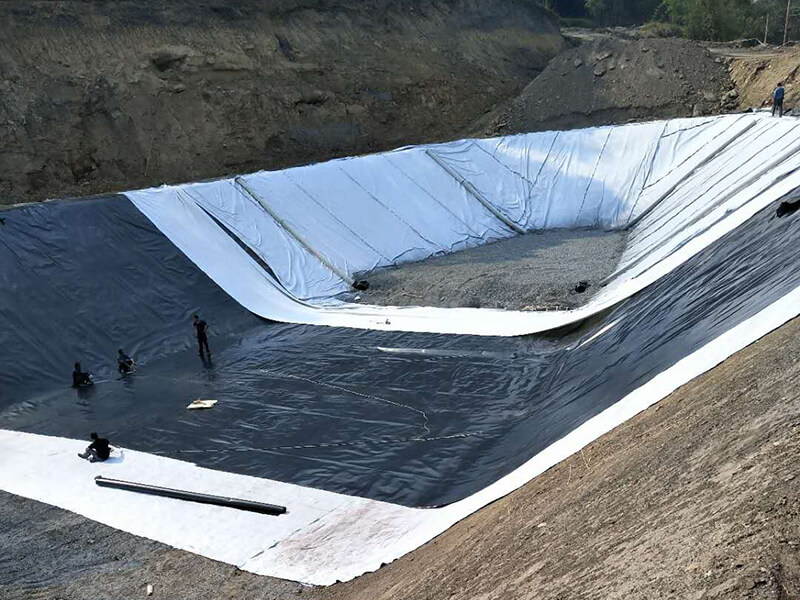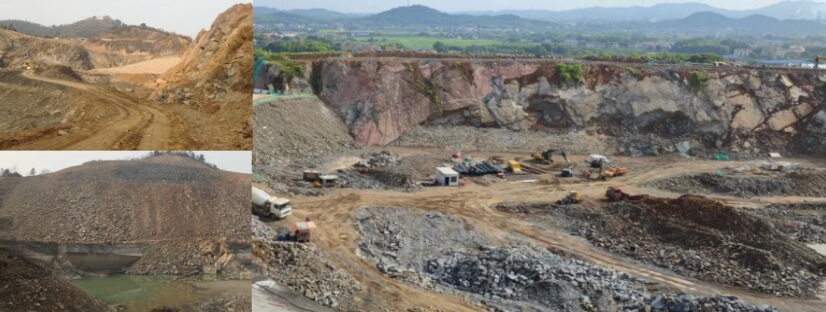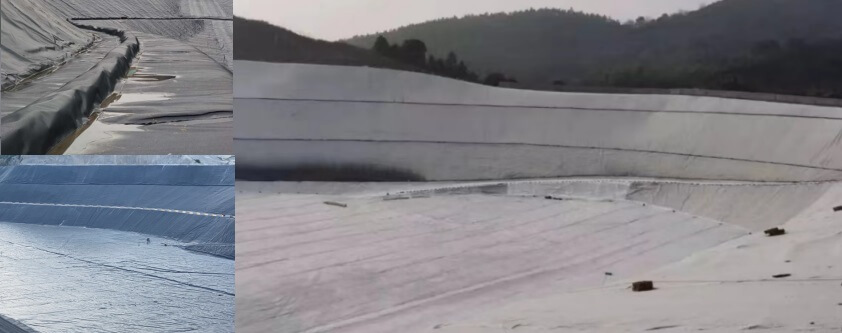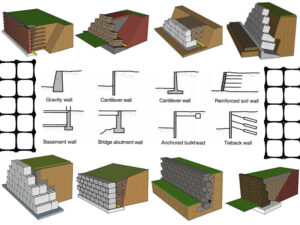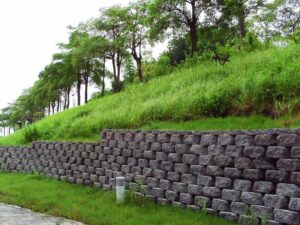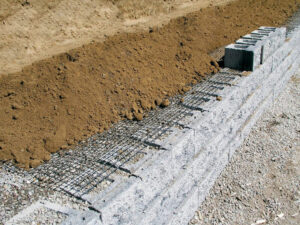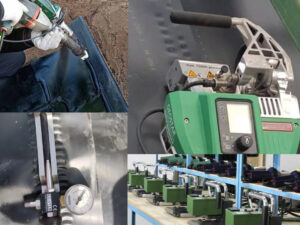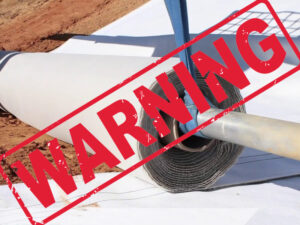The industrial solid waste disposal project in Yunxi District utilized geotechnical materials such as geomembranes, filament geotextiles, GCL bentonite waterproof blankets, and composite drainage nets, all provided and implemented by QIVOC. Despite challenges such as geological conditions, overlapping operations, and the pandemic, the project was completed.
Project Overview
The industrial solid waste disposal project in Yunxi District, China, aims to provide effective end-of-life disposal services for industrial enterprises in Yunxi District. The project is designed with a lifespan of 18 years. The site features uneven terrain, with higher elevations around the perimeter and lower elevations in the center. The surrounding area is primarily mountainous, and the center contains a quarry pit left from stone extraction, with elevations ranging between 47.48 and 102.51 meters. Geological surveys and drilling reveal the area to be a hillside and mountain gully of an eroded and denuded original landscape. The site has three vertical slopes and one side where an intercepting dam is constructed, along with supporting infrastructure such as a leachate adjustment pond and a rigid buffer zone.
Technical Challenges
- Vertical Slopes: The project site has four vertical slopes (including two dams) with a vertical height of over 40 meters. Due to the hard rock and the absence of designed anchor trenches at the top of the slopes, securing geotechnical materials and ensuring the safety of construction personnel pose significant challenges. Additionally, the #1 slope and the dams lack intermediate buffer platforms.
- Uneven Slopes: The slopes are irregular and covered with accumulated rubble that cannot be cleared. Despite using netting and spraying concrete, the surface remains uneven with many suspended areas, which can easily cause the geotechnical material layers to become unsupported and lift away from the surface.
- Concurrent Operations: The specialized anti-seepage construction overlaps with the removal of stone materials from the reservoir bottom, which affects the overall planning of the anti-seepage work.
- External Influences: The project’s progress has been adversely affected by factors such as the COVID-19 pandemic and the rainy season.
Construction Phases
- Material Selection: The project is designed to use 1.5mm geomembrane, 2.0mm geomembrane (including roughened geomembrane), 200g and 600g filament geotextile, 4800g GCL bentonite waterproof blanket, and 6mm composite drainage net, all provided by QIVOC. To counter the effects of high UV radiation and high humidity on the geomembrane, a special formulation was used to significantly enhance the geomembrane’s oxidation resistance and UV resistance while ensuring compliance with relevant technical requirements.
- Technical Innovations: The project employs over 50 professional construction personnel who, addressing the project’s challenges, invented several new construction techniques. These include the secondary anchoring process at the top of slopes, the addition of corner buffer zones, a non-destructive anchoring method for geomembranes, and a secondary fixation method for the reservoir bottom. These innovations effectively addressed the technical challenges of vertical seepage prevention and the lack of anchor trenches at the top of slopes.
- Welding and Inspection: Four dual-track geomembrane welding machines were used to ensure welding quality throughout the construction process. All welding seams undergo a “one weld, three inspections” procedure: first, the weld seams are tested using traditional pressure testing methods, with test points marked with inspection data and the responsible person’s name. Next, the seams undergo an electronic inspection using an electric spark testing gun and a carbon brush leak detector. Once confirmed to be leak-free, the relevant data are reported to the supervisory unit before proceeding to the next step.
- Delivery and Maintenance: The construction unit hired a third-party inspection agency to conduct professional geomembrane integrity tests, achieving a 100% compliance rate.
Conclusion
QIVOC, located in Jinan, Shandong, is a global manufacturer of environmental technology that integrates research and development, production, and sales. If you are interested in our geosynthetic materials, please feel free to contact us at any time.

